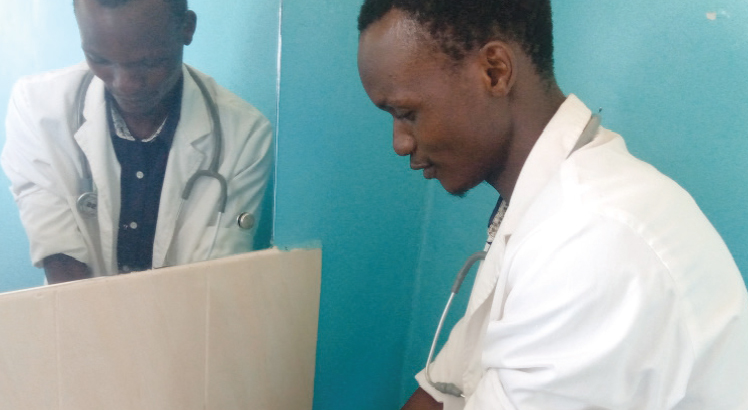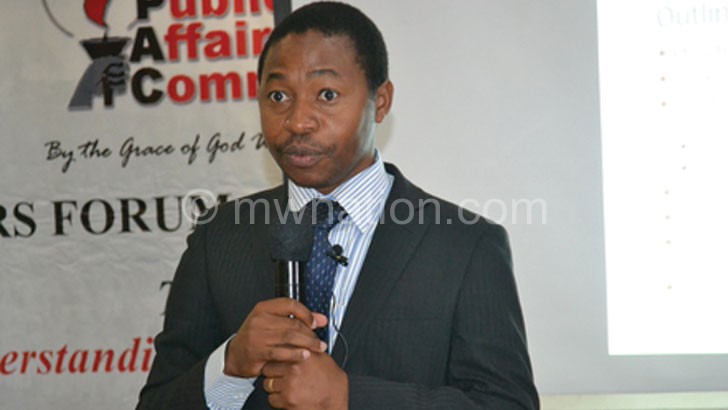Water improves health care
Grey Betha, a midwife technician at Osiyana Health Centre in Nsanje, knows how difficult it is to work in a maternity ward without running water.
Since 2016, she has been working with the facility that serves 4 747 people in Traditional Authority (T/A) Mlolo with dry taps.
“It was tough,” he recalls. “We could not sterilise dirty equipment properly with water drawn from a borehole.”
This let down all efforts to help women have safe motherhood at the facility, says Betha.
The World Health Organisation (WHO) and WaterAid report that half a million babies die within their first month due to lack of safe water and sanitation in health facilities.

Whether natural labour or Caesarean section, Betha says the process used to be slow due to lack of water, risking lives of mothers and babies.
The challenge resulted into poor hygiene and sanitation at the facility.
“It was sad that the maternity ward became a breeding ground for the spread of preventable diseases to mothers and babies. The environment was not safe for the hospital staff, too,” she states.
Oftentimes, health workers juggled with the dilemma to operate on mothers and patients using unsterilised tools or wait until they fetched water from a borehole.
“We were caught between a rock and a hard place. It was a tough choice,” she explains.
Joyce Joseph, from Manyowa Village, says the situation posed a threat to lives, especially pregnant women. This left some reluctant to seek medical care at the facility.
Some women preferred giving birth at home, contrary to a government policy which requires every baby to be born in health facilities with the assistance of skilled caregivers.
The home deliveries were fraught with life-threatening complications to both mothers and newborns.
“All was well at outpatient department but it was difficult to get wounds dressed. Any admittance brought patients to the risk of being infected with poor hygiene-related diseases. We could see the dedication of the staff, but shortage of water frustrated them and denied us our right to health and safe motherhood,” explains the 41 year-old woman.
The health facility’s medical assistant, Tadala Kapangazina, says lack of water also forced the staff to report late for work.
“We had to walk long distance to the community’s borehole,where we used to spend four hours in the morning to get water for home use,” she explains.
Not anymore.
Now Kapangazina happily provides health care services to the target community following the installation of four solar-powered boreholes and rehabilitation of the gravity-fed Sankhulani Water Supply Scheme.
The systems have been supplying running water to the facility since 2020, thanks to the Malawi Resilient and Disaster Risk Management Project (MRDRMP) implemented by the Ministry of Water and Sanitation with funding from the World Bank.
Kapangazina, who is in charge of the facility, says reliable access to clean running water helps health workers discharge their duties effectively.
“With safe water, we are well-equipped to serve the people in all departments thoroughly. Hospital activities revolve around running safe water that allows people to enjoy their right to healthcare services,” he says.
This is in line with Sustainable Development Goal (SDG) Three to ensure access to safe water, sanitation and hygiene for all by 2030.
Joseph says reliable access to water and improved sanitation encourages patients and pregnant women to seek services at the facility.
“It is easy for the staff to keep the environment clean and safe now. There is nothing to stop us from delivering babies here. With clean water, dedicated staff work happily and assist us using clean equipment all the time,” she explains smilingly.
The area’s water monitoring assistant Daud Chiwaya says they promote community ownership of the initiative for sustainable water supply.
“The good thing is we all know how lack of water affects lives and delivery of health services. They used to draw water from far-flung boreholes to be used here, but that is history. This is why community members are eager to protect equipment supplying the facility with water,” he explains.
Wellford Shonze of Semu Village says community members jealously protect the water system to avoid reverting to poor sanitation and service delivery caused by hiccups in water supply.
John Chingawale, principal water engineer in the Ministry of Water and Sanitation, says the ministry is delighted with improved service delivery courtesy of the water.
The ministry has engaged the communities to properly manage the equipment.
“We have trained water users associations on management of the scheme to keep the water running for a long time. There is need to recruit a local operator who will ensure resources are used wisely and to maintain the equipment,” he says.





